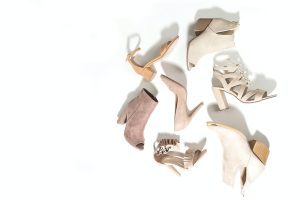Choosing the right shoes for children is an important decision that can have a significant impact on their foot health and development. As parents, it is our responsibility to ensure that our children’s feet are properly supported and protected as they grow and explore the world around them. In this article, we will discuss the importance of choosing the right shoes for your child and provide tips and information to help you make informed decisions. We will cover topics such as understanding your child’s foot development, factors to consider when choosing children’s shoes, how to measure your child’s feet, different types of shoes for different occasions, choosing the right shoe material, ensuring shoe comfort, caring for your child’s shoes, budget-friendly shoe options, and where to look and what to look for when shopping for children’s shoes.
The Importance of Choosing the Right Shoes for Your Child
Ill-fitting shoes can have a negative impact on children’s foot health. When shoes are too tight or too loose, they can cause discomfort, blisters, calluses, and even more serious foot problems such as bunions or hammertoes. Additionally, poorly fitting shoes can affect a child’s balance and stability, making them more prone to falls and injuries.
On the other hand, proper shoes can support healthy foot development in children. Children’s feet are still growing and developing, so it is important to choose shoes that allow for natural movement and flexibility. Shoes with proper arch support and cushioning can help absorb shock and reduce the risk of foot fatigue or pain. Good quality shoes can also provide stability and protection for active children who engage in sports or other physical activities.
Understanding Your Child’s Foot Development
Children’s feet go through different stages of development as they grow. Understanding these stages can help you choose the right shoes for your child at each stage.
In infancy, babies’ feet are soft and pliable. They have a layer of fat that provides cushioning and protection. At this stage, it is important to choose shoes that are soft and flexible, allowing for natural movement and growth. Soft-soled shoes or booties made of breathable materials such as leather or cloth are ideal for infants.
As children start to walk, usually around 12 to 18 months, their feet begin to develop arches and their bones start to harden. It is important to choose shoes that provide proper arch support and stability at this stage. Shoes with a firm heel counter and a flexible sole are recommended to support healthy foot development.
As children continue to grow, their feet become more stable and their arches become more defined. It is important to choose shoes that allow for natural movement and flexibility while still providing support and protection. Look for shoes with a roomy toe box, good arch support, and a cushioned sole.
Factors to Consider When Choosing Children’s Shoes
When choosing shoes for your child, there are several important factors to consider:
Size: It is crucial to choose the right size shoe for your child. Shoes that are too small can cause discomfort and restrict foot growth, while shoes that are too big can cause tripping or blisters. Measure your child’s feet regularly and choose shoes that provide a thumb’s width of space between the longest toe and the end of the shoe.
Shape: Children’s feet come in different shapes, so it is important to choose shoes that match the shape of your child’s feet. Some children have narrow feet, while others have wide feet. Look for shoes that provide a snug fit without squeezing or pinching.
Support: Good quality shoes should provide proper arch support and cushioning. Look for shoes with a supportive midsole and a cushioned insole. Shoes with a firm heel counter can also provide stability and prevent excessive pronation or supination.
Activities: Consider your child’s activities when choosing shoes. If your child is involved in sports or other physical activities, look for shoes that provide the necessary support and protection for those activities. For example, if your child plays soccer, choose shoes with cleats for better traction on the field.
Finding the Right Fit: How to Measure Your Child’s Feet
Measuring your child’s feet is an important step in finding the right size shoe. Here is a step-by-step guide to measuring your child’s feet:
1. Prepare a piece of paper, a pen or pencil, and a ruler.
2. Have your child stand on the piece of paper with their weight evenly distributed.
3. Trace the outline of your child’s foot with the pen or pencil.
4. Measure the length from the heel to the longest toe using the ruler.
5. Measure the width at the widest part of the foot.
6. Repeat the process for the other foot.
7. Use these measurements to find the appropriate size on a sizing chart provided by the shoe manufacturer.
It is important to note that children’s feet can grow quickly, so it is recommended to measure their feet every few months to ensure they are wearing the correct size.
Different Types of Shoes for Different Occasions

Children may need different types of shoes for different activities and occasions. Here are some examples:
Everyday Shoes: These are shoes that your child can wear for everyday activities such as going to school or playing at the park. Look for shoes that are comfortable, supportive, and durable.
Sports Shoes: If your child is involved in sports or other physical activities, it is important to choose shoes that are specifically designed for those activities. For example, if your child plays basketball, choose basketball shoes that provide ankle support and cushioning.
Sandals: Sandals are a great option for warmer weather or for casual occasions. Look for sandals with adjustable straps and a supportive footbed.
Boots: Boots are a good option for colder weather or for more formal occasions. Look for boots with a sturdy sole and good insulation.
Materials Matter: Choosing the Right Shoe Material for Your Child
The material of the shoe can affect its comfort, durability, and breathability. Here are some common shoe materials and their pros and cons:
Leather: Leather is a popular choice for children’s shoes because it is durable, breathable, and molds to the shape of the foot. However, leather shoes can be more expensive than other materials.
Synthetic Materials: Synthetic materials such as nylon or polyester are often used in athletic shoes because they are lightweight and breathable. However, they may not be as durable as leather.
Canvas: Canvas shoes are lightweight and breathable, making them a good option for warmer weather. However, they may not provide as much support or protection as other materials.
Rubber: Rubber is often used for the soles of children’s shoes because it provides good traction and durability. However, rubber soles may not be as flexible as other materials.
When choosing shoe materials for your child, consider their needs and preferences. For example, if your child has sweaty feet, choose shoes made of breathable materials to prevent odor or discomfort.
Tips for Ensuring Your Child’s Shoes Are Comfortable
Comfort is key when it comes to children’s shoes. Here are some tips to ensure that your child’s shoes are comfortable:
Check for Proper Fit: Make sure that the shoes fit properly by checking for enough space in the toe box and a snug fit around the heel. The shoes should not be too tight or too loose.
Flexibility: Check the flexibility of the shoes by bending them at the toe and heel. The shoes should bend easily at these points to allow for natural movement.
Cushioning: Press on the insole of the shoe to check for cushioning. The insole should provide enough padding to absorb shock and provide comfort.
Break Them In: New shoes may feel stiff or uncomfortable at first. To break them in, have your child wear them for short periods of time and gradually increase the wearing time.
Caring for Your Child’s Shoes: Maintenance and Cleaning
Proper maintenance and cleaning can help extend the life of your child’s shoes and keep them looking new. Here are some tips:
Clean Regularly: Wipe the shoes with a damp cloth or sponge to remove dirt or stains. For more stubborn stains, use a mild soap or detergent.
Air Dry: Allow the shoes to air dry naturally after cleaning. Avoid using direct heat sources such as a hairdryer, as this can damage the shoes.
Store Properly: Store the shoes in a cool, dry place away from direct sunlight. Avoid stacking or crushing the shoes, as this can cause them to lose their shape.
Rotate Shoes: It is a good idea to have multiple pairs of shoes for your child and rotate them regularly. This allows each pair to air out and prevents excessive wear and tear.
Budget-Friendly Shoe Options for Growing Feet
Children’s feet grow quickly, so it can be challenging to keep up with their shoe needs without breaking the bank. Here are some budget-friendly shoe options:
Outlet Stores: Outlet stores often offer discounted prices on brand-name shoes. Look for outlet stores in your area or shop online for deals.
Sales and Clearance: Keep an eye out for sales and clearance events at your favorite shoe stores. This is a great opportunity to find quality shoes at a lower price point.
Secondhand Stores: Consider shopping at secondhand stores or online marketplaces for gently used children’s shoes. Just make sure to inspect the shoes for any signs of wear or damage before purchasing.
Hand-Me-Downs: If you have older children or friends with children, consider passing down shoes that are still in good condition. This can save you money and ensure that the shoes are still suitable for your child’s needs.
Shopping for Children’s Shoes: Where to Look and What to Look For
When shopping for children’s shoes, it is important to know where to look and what to look for. Here are some tips:
Shop at the End of the Day: Children’s feet tend to swell throughout the day, so it is best to shop for shoes in the late afternoon or evening when their feet are at their largest.
Bring Socks: If your child will be wearing socks with their shoes, make sure to bring a pair when trying on shoes. This will ensure a proper fit.
Try Them On: Have your child try on the shoes and walk around in them to make sure they are comfortable and provide a good fit. Check for any areas of discomfort or rubbing.
Check Return Policy: Before making a purchase, check the store’s return policy in case the shoes do not fit properly or meet your expectations.
Consider Your Child’s Preferences: Involve your child in the shoe shopping process and consider their preferences. This can help ensure that they are happy with their new shoes and more likely to wear them.
Choosing the right shoes for children is essential for their foot health and development. By understanding your child’s foot development, considering important factors such as size and support, measuring their feet accurately, choosing appropriate shoe materials, ensuring comfort, caring for their shoes, finding budget-friendly options, and shopping wisely, you can make informed decisions and provide your child with the best possible footwear. Remember that children’s feet grow quickly, so it is important to regularly check their shoe size and replace worn-out or ill-fitting shoes. By prioritizing your child’s foot health and making thoughtful shoe choices, you can set them up for a lifetime of healthy and happy feet.
If you’re in the market for the best children’s shoes, you’ll want to check out this informative article on Boutique La Fleur’s website. They have a comprehensive guide on how to choose the right child’s shoes, providing valuable tips and insights. From finding the perfect fit to considering the materials and design, this article covers everything you need to know. So, if you want to ensure your little one’s feet are comfortable and well-supported, click here to read the full article: https://www.boutiquelafleur.com/2022/08/23/the-best-tips-to-choose-the-right-childs-shoes/.


